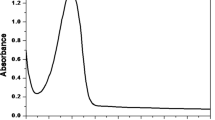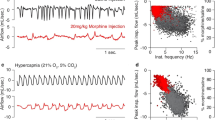Abstract
Biogenic amines and polyamines participate in all vital organism functions, their levels being important function determinants. Studies were performed to check whether repeated administration of poly(propylene imine) (PPI) dendrimers, synthetic macromolecules with diaminobutane core, and peripheral primary amine groups, may influence the endogenous level of amines, as represented by the two of them: spermidine, a natural derivative of diaminobutane, and histamine. The experiment was carried out on Wistar rats. Fourth generation PPI dendrimer, as well as maltotriose-modified fourth generation PPI dendrimers with (a) cationic open sugar shell and (b) neutral dense sugar shell that possess a higher biocompatibility, was used. Applying the combination of column chromatography on Cellex P and spectrofluorimetric assays of o-phthaldialdehyde, the final amine condensation products were employed to analyze tissue spermidine and histamine outside the central nervous system. Furthermore, radioenzymatic assay was used to measure histamine levels in the brain. The obtained results indicate that in some tissues, the endogenous concentrations of histamine and spermidine may be affected by dendrimers depending on their dose and type of dendrimers.




Similar content being viewed by others
Abbreviations
- Fourth generation PPI:
-
Poly(propylene imine) dendrimers
- BA:
-
Biogenic amines
- PA:
-
Polyamines
- OPT:
-
o-Phtalaldehyde
References
Agostinelli E, Marques MP, Calheiros R, Gil FP, Tempera G, Viceconte N, Battaglia V, Grancara S, Toninello A (2010) Polyamines: fundamental characters in chemistry and biology. Amino Acids 38(2):393–403
Appelhans D, Oertel U, Mazzeo R, Komber H, Hoffmann J, Weidner S, Brutschy B, Voit B, Ottaviani MF (2010) Dense-shell glycodendrimers: UV/Vis and electron paramagnetic resonance study of metal ion complexation. Proc R Soc A 466:1489–1513
Bachrach U, Wang YC, Tabib A (2001) Polyamines: new cues in cellular signal transduction. News Physiol Sci 16:106–109
Baxter JH, Adamik R (1978) Differences in requirements and actions of various histamine-releasing agents. Biochem Pharmacol 27:497–503
Berlin G (1984) The dynamics of mast cell secretion mediated by IgE or polyamines. Agents Actions 15:482–487
Burns M, Graminski G, Weeks R, Chen Y, O’Brien T (2009) Lipophilic lysine-spermine conjugates are potent polyamine transport inhibitors for use in combination with a polyamine biosynthesis inhibitor. J Med Chem 52:1983–1993
Cipolla B, Guille F, Moulinoux JP, Quemener V, Staerman F, Corbel L, Lobel B (1993) Polyamines and prostatic carcinoma: clinical and therapeutic implications. Eur Urol 24:124–131
Cohen SS (2001) A guide to the polyamines. News Physiol Sci 16:106–109
Fogel WA, Lewinski A, Jochem J (2005) Histamine in idiopathic inflammatory bowel diseases—not a standby player. Folia Med Cracov 46(3–4):107–118
Freed DLJ (1999) Do dietary lectins cause disease? Br Med J 318:1023–1024
Gerner EW, Meyskens FL Jr (2004) Polyamines and cancer: old molecules, new understanding. Nat Rev Cancer 4:781–792
Håkanson R, Rönnberg AL (1973) Fluorometric determination of spermidine using o-phthalaldehyde: optimum reaction conditions and tests of identity. Anal Biochem 54(2):353–361
Håkanson R, Rönnberg AL, Sjölund K (1972) Fluorometric determination of histamine with OPT: optimum reaction conditions and tests of identity. Anal Biochem 47(2):356–370
He S-H (2004) Key role of mast cells and their major secretory products in inflammatory bowel disease. World J Gastroenterol 10(3):309–318
Janaszewska A, Ziemba B, Ciepluch K, Appelhans D, Voit B, Klajnert B, Bryszewska (2012) The biodistribution of maltotriose-modified poly(propylene imine) (PPI) dendrimers conjugated with fluorescein—proofs of crossing blood–brain–barrier. New J Chem 36:350–353
Jiang YY, Tang GT, Zhang LH, Kong SY, Zhu SJ, Pei YY (2010) PEGylated PAMAM dendrimers as a potential drug delivery carrier: in vitro and in vivo comparative evaluation of covalently conjugated drug and noncovalent drug inclusion complex. J Drug Target 18(5):389–403
Jones BL, Kearns GL (2011) Histamine: new thoughts about a familiar mediator. Clin Pharmacol Ther 89(2):189–197
Klajnert B, Appelhans D, Komber H, Morgner N, Schwarz S, Richter S, Brutschy B, Ionov M, Tonkikh A, Bryszewska M, Voit B (2008) The influence of densely organized maltose shells on the biological properties of poly(propylene imine) dendrimers: new effects dependent on hydrogen bonding. Chem Eur J 14:7030–7041
Klajnert B, Bryszewska M (2007) Dendrimers in medicine. Nova Science Publishers, Inc., New York
Kurosawa M, Uno D, Kobayashi S (1991) Naturally occurring aliphatic polyamines-induced histamine release from rat peritoneal mast cells. Allergy 46:349–354
Leveque J, Foucher F, Bansard JY, Havouis R, Grall JY, Moulinoux JP (2000) Polyamine profiles in tumor, normal tissue of the homologous breast, blood, and urine of breast cancer sufferers. Breast Cancer Res Treat 60:99–105
Neerman MF, Zhang W, Parrish AR, Simanek EE (2004) In vitro and in vivo evaluation of a melamine dendrimer as a vehicle for drug delivery. Int J Pharm 281:129–132
Ogasawara M, Yamauchi K, Satoh Y, Yamaji R, Inui K, Jonker JW, Schinkel AH, Maeyama K (2006) Recent advances in molecular pharmacology of the histamine systems: organic cation transporters as a histamine transporter and histamine metabolism. J Pharmacol Sci 101:24–30
Okuda T, Kawakami S, Maeie T, Niidome T, Yamashita F, Hashida M (2006) Biodistribution characteristics of amino acid dendrimers and their PEGylated derivatives after intravenous administration. J Control Release 114:69–77
Prieto MJ, Temprana CF, Del Rio Zabala NE, Marotta CH, Alonso Sdel V (2011) Optimization and in vitro toxicity evaluation of G4 PAMAM dendrimer–risperidone complexes. Eur J Med Chem 46(3):845–850
Roberts JC, Bhalgat MK, Zera RT (1996) Preliminary biological evaluation of polyamidoamine (PAMAM) starburst dendrimers. Biomed Mater Res 30(1):53–65
Seiler N, Raul F (2005) Polyamines and apoptosis. J Cell Mol Med 9:623–642
Shaff RE, Beaven MA (1979) Increased sensitivity of the enzymatic isotopic assay of histamine: measurement of histamine in plasma and serum. Anal Biochem 94:425–430
Silla-Santos MH (1996) Biogenic amines: their importance in foods. Int J Food Microbiol 29:213–231
Suzuki E, Ninomiya Y, Umezawa K (2009) Induction of histidine decarboxylase in macrophages inhibited by the novel NF-kappaB inhibitor (−)-DHMEQ. Biochem Biophys Res Commun 379(2): 379–383
Svenson S, Tomalia DA (2005) Dendrimers in biomedical applications—reflections on the field. Adv Drug Deliv Rev 57:2106–2129
Tanaka-Shintani M, Watanabe M (2007) Immunohistochemical study of enterochromaffin-like cell in human gastric mucosa. Pathol Int 57(9):572–583
Tomasi S, Renault J, Martin B, Duhieu S, Cerec V, Le Roch M, Uriac P, Delcros J (2010) Targeting the polyamine transoprt system with benzazepine- and azepine-polyamine conjugates. J Med Chem 53:7647–7663
Ziemba B, Janaszewska A, Ciepluch K, Krotewicz M, Fogel WA, Appelhans D, Voit B, Bryszewska M, Klajnert B (2011) In vivo toxicity of poly(propyleneimine) dendrimers. J Biomed Mater Res Part A. 99 A: 261–268
Acknowledgments
Studies were funded by the project “Biological properties and biomedical applications of dendrimers” operated within the Foundation for Polish Science Team Programme cofinanced by the EU European Regional Development Fund. The work was done in the frame of the COST Action TD0802 “Dendrimers for biomedical applications.” We also thank Mr. Ireneusz Pieszynski for his help in statistical analysis.
Author information
Authors and Affiliations
Corresponding author
Rights and permissions
About this article
Cite this article
Ciepluch, K., Ziemba, B., Janaszewska, A. et al. Modulation of biogenic amines content by poly(propylene imine) dendrimers in rats. J Physiol Biochem 68, 447–454 (2012). https://doi.org/10.1007/s13105-012-0158-y
Received:
Accepted:
Published:
Issue Date:
DOI: https://doi.org/10.1007/s13105-012-0158-y




